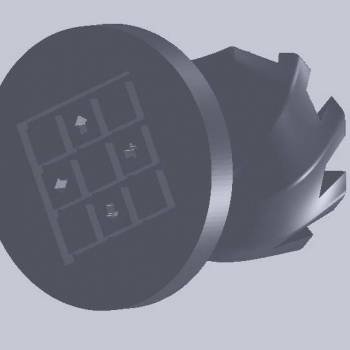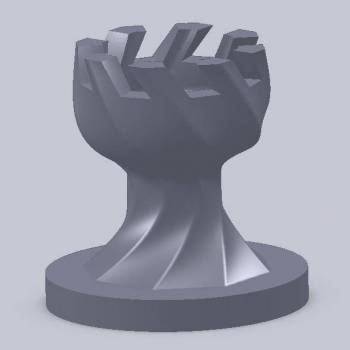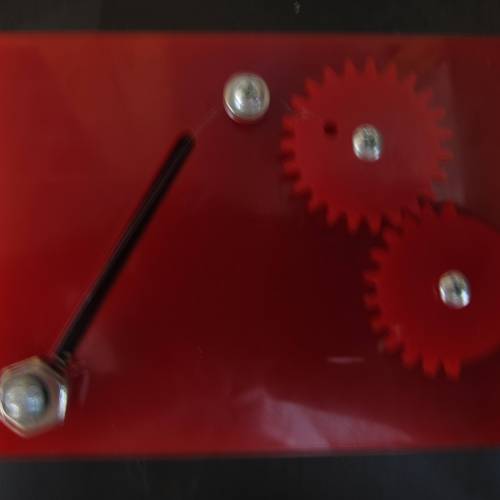Jonathan Ostrander
CHESS PIECE: ROOK
My rook chess piece design mostly is derived from the classic rook design style with a few major details changed. First, the bottom of the piece contains directions for how the piece moves. Putting these instructions on the bottom would be a good way to introduce new players to the game without distracting experienced players. The second major aspect of design is the curve of the piece. For one, this curve gives the rook a more modern look while also showing hints of a jester like quality, relating to the courts of the royal empires where chess was first devised. That last detail that should be noted is the turn in the curve. This quality reminds that players that the rook always has the ability to strike back directly during the next turn.
Alternating Reciprocal Motion
Mechanism 1:
Dream Team's first mechanism presented some difficulties, not in the design phase of the part, but in the prototyping. The issue faced was trying to allow gears to spin on bolts fastened securely on a back plate. I was unable to find a viable solution to this problem for this iteration of the prototyping phase, although it was solved later on. The temporary solution used is a spacer on a gear without any sort of spacer in the gear. This caused the gear to seize up after a few rotation.
The point of the mechanism is to raise an object on a ramp. This was accomplishing fairly easily using string, but as seen in our final project due to weighting issues and overall problems, the ramp mechanisms is one of the biggest problems that would have to be fixed in the second iteration of the automata.
Mechanism 2:
Mechanism 2 is the special case of my assigned mechanism: alternating reciprocal motion. In this case we sized gears with equal pitch diameters in order to create basic sinusoidal motion. In this assignment the problem from the first mechanism was solved. It was discovered that 3 spacers together have a tiny bit more thickness than an eighth of an inch which creates enough space for the gear to spin freely while also allowing the spacers to be secured to the back plate.
In our automata we opted to go with a different design to save space.






